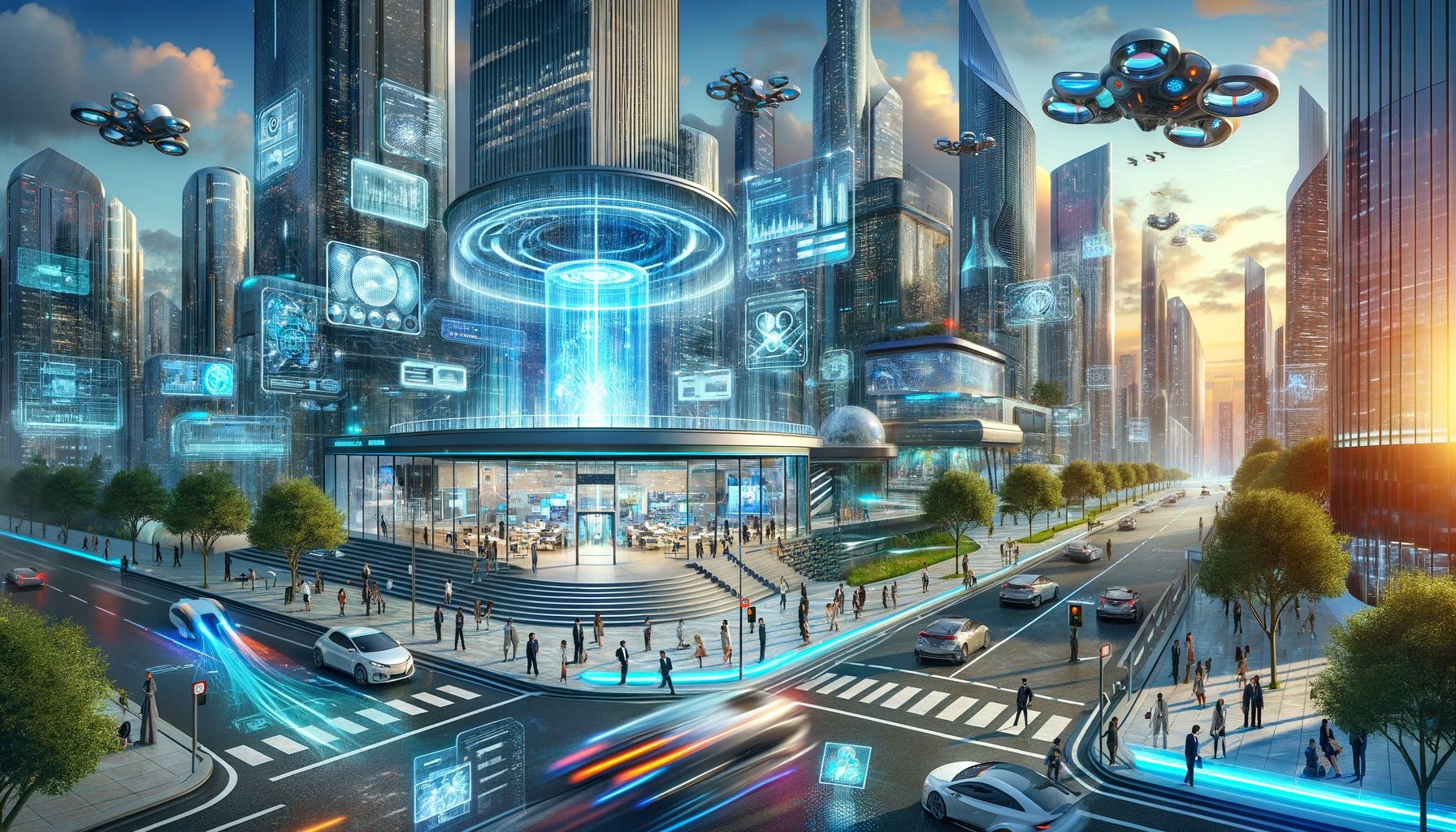The energy sector stands at a critical juncture as we approach 2024. With the ongoing global...
Banking in 2050: A Glimpse into the Future of Finance

Introduction: As we stand on the threshold of new technological advancements, it's fascinating to envision how these developments will reshape industries, especially banking. By 2050, banking as we know it today will have undergone a radical transformation, driven by innovation and changing consumer needs. In this blog post, we'll explore the potential landscape of banking in 2050, taking into account current trends and technological progress.
1. Digital-First Banking: The future of banking is unequivocally digital. With the rising prevalence of smartphones and internet access, physical bank branches are expected to become a rarity. Instead, mobile and online platforms will offer comprehensive banking services - from opening an account to complex financial transactions. This shift will not only enhance convenience but also significantly reduce operational costs for banks.
2. AI and Machine Learning at the Forefront: Artificial Intelligence (AI) and machine learning will be the backbone of future banking systems. These technologies will revolutionize customer service through sophisticated chatbots capable of handling complex queries. Moreover, they will play a crucial role in personalizing financial advice, managing risks, and devising investment strategies tailored to individual customer profiles.
3. The Blockchain Revolution: Blockchain technology promises to introduce unmatched levels of transparency and security in banking transactions. By 2050, it could become a standard for verifying and recording transactions, potentially alongside the widespread use of cryptocurrencies. The era might also witness central banks issuing their digital currencies, integrating the benefits of blockchain into mainstream finance.
4. Hyper-Personalization of Services: With advancements in data analytics, banks will be able to offer highly personalized banking experiences. Customers can expect products and services custom-designed to fit their unique financial habits and goals, a significant leap from the one-size-fits-all approach seen today.
5. Automation and Efficiency: Automation will streamline banking operations, minimizing the need for human intervention and reducing the scope for errors. This efficiency isn't just about cost-saving for banks; it's about offering faster, smoother service to customers.
6. Reinforced Cybersecurity: As banking becomes more intertwined with the digital realm, robust cybersecurity measures will be paramount. Banks will likely invest in cutting-edge technology to safeguard against cyber threats, ensuring customer data protection and maintaining trust.
7. Bridging the Financial Inclusion Gap: Future banking holds the promise of global financial inclusion. With digital services reaching remote corners of the world, banking could become accessible to populations that are currently unbanked or underbanked, marking a significant step towards economic equality.
8. The Rise of Green Banking: The banking sector of 2050 will likely be more aligned with environmental sustainability. Green banking, focusing on eco-friendly practices and investments, could become the norm, reflecting a growing global consciousness about environmental issues.
9. Navigating the Evolving Regulatory Landscape: Regulatory frameworks will evolve to address the challenges posed by new technologies like digital currencies and AI. These regulations will aim to balance innovation with consumer protection and financial stability.
10. Seamless Integration with Daily Life: Banking services might become deeply integrated with other life aspects, such as shopping, healthcare, and even social media platforms, offering a seamless financial experience across various domains.
Conclusion: The banking sector in 2050 will be characterized by technological sophistication, personalized services, and a strong emphasis on security and sustainability. While these predictions are based on current trends, the actual future of banking could be shaped by unforeseen technological breakthroughs and shifts in global finance dynamics. One thing is certain - the way we bank is set for an exciting evolution, and it's a journey worth keeping an eye on.


